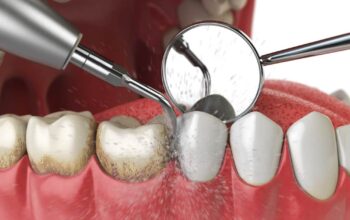Experiencing back pain or spinal discomfort can significantly impact daily life, leading to reduced mobility and constant irritation. The complexity of the spine means that accurately identifying the source of pain requires specialised medical expertise. When persistent symptoms arise, consulting a dedicated back problem doctor is a crucial step towards understanding your condition. This guide outlines how a spine clinic diagnoses spinal issues, from initial consultation to advanced imaging.
Initial Consultation and Medical History
The process begins with a detailed initial consultation with a back problem doctor. During this appointment, the doctor will gather your medical history. This includes information about the onset of your pain, its duration, intensity, and specific location. They will inquire about factors that alleviate or worsen your symptoms, such as certain movements, postures, or activities.
The doctor will ask about associated symptoms, such as numbness, tingling, weakness in your limbs, or changes in bowel or bladder function. This comprehensive history provides the back problem doctor with valuable initial clues about the potential nature of your spinal condition, guiding the subsequent physical examination and diagnostic steps.
Comprehensive Physical Examination
Following the medical history, a back problem doctor conducts a thorough physical examination. This step assesses your physical ability and helps pinpoint potential areas of concern within your spine. The examination typically includes observing your posture, evaluating your range of motion in the neck and back, and checking for any visible deformities or muscle spasms.
The doctor will also perform specific neurological tests. These tests evaluate your reflexes, muscle strength in various limbs, and sensation to determine if nerves are compressed or damaged. This hands-on assessment helps the back problem doctor localise the problem area and assess the extent of nerve involvement before ordering further tests.
Advanced Diagnostic Imaging
If the initial consultation and physical examination suggest an underlying structural issue, the back problem doctor at the spine clinic will typically order diagnostic imaging tests. These tests provide detailed views of the spinal structures, helping to confirm a diagnosis or rule out certain conditions.
Common imaging tests include:
- X-rays – These provide images of bones and can identify spinal alignment issues, fractures, or degenerative changes in the vertebrae.
- MRI (Magnetic Resonance Imaging) Scans – MRI uses magnetic fields and radio waves to create detailed images of soft tissues, including intervertebral discs, spinal cord, and nerves. This is often crucial for identifying herniated discs, spinal stenosis, or spinal cord compression.
- CT (Computed Tomography) Scans – CT scans provide cross-sectional images, offering more detail of bone structures than X-rays. They are useful for assessing bone spurs, spinal fractures, or complex deformities.
- Nerve Conduction Studies (NCS) and Electromyography (EMG) – These tests assess nerve function and muscle electrical activity, helping to determine the extent of nerve damage or muscle dysfunction.
Laboratory Tests and Specialised Procedures
Sometimes, an orthopaedic doctor may suggest lab tests or endorse specialised methods to assist in determining the diagnosis. Blood tests can exclude underlying inflammatory conditions, infections, or other systemic diseases that could present as back pain. For example, inflammation markers could suggest diseases such as ankylosing spondylitis.
Moreover, diagnostic injections such as selective nerve root blocks or facet joint injections can fulfil two roles: offering temporary pain relief and verifying the pain’s origin. The back problem doctor can establish whether that specific nerve or joint is the source of the patient’s symptoms by administering an anaesthetic into a targeted region.
Formulating a Diagnosis and Treatment Plan
After collecting all diagnostic information, the back problem doctor evaluates it to formulate a precise diagnosis. This stage involves outlining the various treatment options available, ranging from conventional methods to interventional procedures or, if necessary, surgical interventions.
The doctor will discuss the possible advantages and drawbacks of each treatment method. With this thoroughgoing diagnostic process, the treatment plan is customised to your condition to achieve effective pain relief and improved function.
Conclusion
Accurately diagnosing a spinal condition requires a systematic approach, led by an experienced back problem doctor. From the initial detailed medical history and physical examination to advanced imaging and specialised tests, every step at a spine clinic aims to pinpoint the precise cause of your pain. This process is essential for developing an effective and personalised treatment plan, offering the best chance for managing your spinal condition.
Experiencing back pain? Contact Achieve Spine & Orthopaedic Centre for a thorough assessment from a spine clinic.




